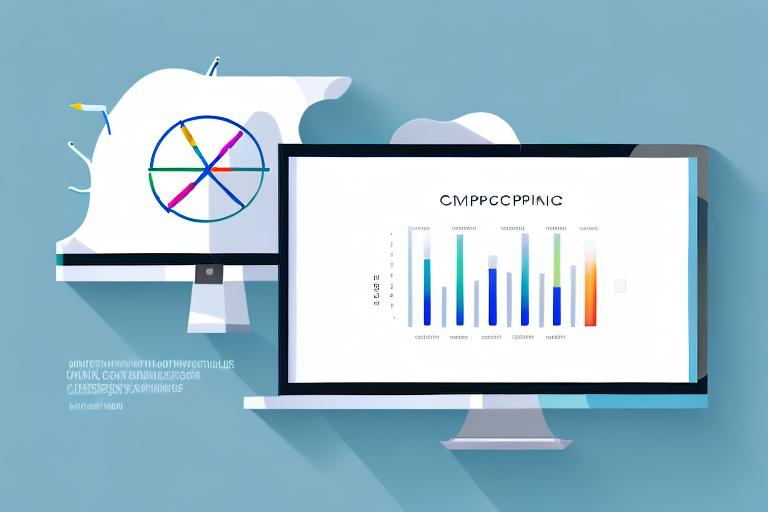Comparing Shipping Software: Analytics, Reporting, and More
In today's fast-paced business environment, efficient shipping operations are vital to the success of any product-based company. With the surge in e-commerce and online shopping, shipping has become a cornerstone of the customer experience. Selecting the right shipping software can streamline operations, enhance efficiency, and reduce costs. This article explores the significance of choosing the appropriate shipping software and examines key features to consider when evaluating different options.
The Importance of Choosing the Right Shipping Software
Selecting the right shipping software is crucial for several reasons:
- Operational Efficiency: Streamlining the shipping process reduces errors and delays, enhancing the overall customer experience.
- Cost Reduction: Automating manual tasks lowers labor costs and allows resources to be allocated to other operational areas.
- Data-Driven Decisions: Advanced analytics provide insights into shipping performance, enabling businesses to optimize their strategies.
According to a Forbes report, businesses utilizing robust shipping software experience up to a 30% improvement in shipping efficiency.
Understanding the Benefits of Shipping Analytics
Shipping analytics is a pivotal feature of advanced shipping software. It allows businesses to monitor key metrics such as shipping times, delivery rates, and costs. These insights enable companies to:
- Optimize Shipping Strategies: Identify and address delays or inefficiencies in the shipping process.
- Enhance Customer Satisfaction: Ensure timely deliveries, leading to positive reviews and repeat business.
- Cost Management: Detect areas of overspending and adjust strategies to reduce costs without compromising quality.
For instance, by analyzing delivery times, businesses can pinpoint bottlenecks and implement solutions to ensure faster deliveries. Additionally, understanding shipping costs helps in negotiating better rates with carriers.
Key Features to Look for in Shipping Software
When evaluating shipping software options, consider the following essential features:
Order Management
Efficient order management systems integrate seamlessly with your e-commerce platforms, ensuring real-time order processing and inventory updates.
Shipping Label Generation
Automated shipping label generation saves time and reduces errors, ensuring that packages are accurately labeled and tracked.
Carrier Integrations
Integration with multiple carriers offers flexibility and competitive shipping rates, allowing businesses to choose the best options for their needs.
Tracking and Reporting
Comprehensive tracking features provide visibility into each shipment's status, while detailed reports offer insights into performance metrics.
Global Shipping Capabilities
For businesses with an international customer base, global shipping capabilities ensure smooth cross-border transactions and compliance with international regulations.
Automation Features
Automation can handle tasks like selecting the best carrier based on package weight and destination, sending automated tracking updates to customers, and more.
How to Choose the Best Shipping Software for Your Business
Choosing the best shipping software involves a strategic approach:
- Assess Your Business Needs: Identify the specific requirements and objectives of your shipping operations.
- Evaluate Scalability: Ensure the software can handle increased shipping volumes as your business grows.
- Integration Capabilities: Confirm that the software integrates smoothly with your existing systems, such as e-commerce platforms and inventory management software.
- Trial and Reviews: Utilize free trials and read customer reviews to gauge the software's performance and reliability.
Additionally, consider the level of customer support provided and whether the software offers comprehensive training resources for your team.
Top Shipping Software: Comparative Analysis
Several shipping software options stand out in the market, each offering unique features and benefits:
- ShipStation: Known for its user-friendly interface and robust carrier integrations, ShipStation is ideal for small to medium-sized businesses.
- Shippo: Offers competitive shipping rates and is highly customizable, making it suitable for businesses looking for tailored solutions.
- Ordoro: Provides advanced inventory management features alongside shipping capabilities, ideal for businesses with complex inventory needs.
- Easyship: Excels in global shipping solutions, offering extensive international shipping options and compliance support.
When selecting a shipping software, consider factors such as ease of use, customer support, and pricing to determine the best fit for your business.
The Role of Reporting in Optimizing Shipping Operations
Reporting features in shipping software are essential for continuous improvement:
- Performance Tracking: Monitor shipping times, delivery rates, and costs to identify trends and areas for improvement.
- Expense Monitoring: Keep track of shipping expenses to manage budgets effectively and identify cost-saving opportunities.
- Customer Satisfaction: Analyze delivery performance to ensure timely and reliable shipping, enhancing customer satisfaction and loyalty.
Effective reporting enables businesses to make informed decisions, driving efficiency and profitability.
Common Mistakes to Avoid When Choosing Shipping Software
Selecting the wrong shipping software can hinder your operations. Avoid these common mistakes:
- Ignoring Specific Needs: Failing to consider your unique business requirements can lead to selecting software that doesn't align with your operations.
- Poor Integration: Choosing software that doesn't integrate well with your existing systems can cause operational disruptions.
- Focusing Solely on Cost: Opting for the cheapest option may result in missing out on essential features and support.
- Neglecting Scalability: Selecting software that cannot scale with your business growth can lead to future limitations.
To avoid these pitfalls, conduct a thorough evaluation of your needs and the software's capabilities before making a decision.
Implementing Shipping Software: Best Practices
Successful implementation of shipping software requires careful planning:
- Employee Training: Ensure your team is well-trained on the new system to maximize its benefits.
- Data Migration: Accurately transfer existing shipping data to the new software to maintain continuity.
- System Integration: Properly integrate the shipping software with other business systems to ensure seamless operations.
- Stakeholder Communication: Keep all stakeholders informed about the implementation process and any changes to workflows.
By following these best practices, businesses can ensure a smooth transition and fully leverage the advantages of their new shipping software.
Staying Ahead with Advanced Shipping Features
To maintain a competitive edge, consider shipping software that offers advanced features:
- Real-Time Tracking: Provides customers with up-to-date information on their shipments, enhancing transparency.
- Same-Day Delivery: Offers faster delivery options to meet customer demands for quick shipping.
- Customizable Shipping Options: Allows businesses to offer tailored shipping choices based on customer preferences and needs.
Incorporating these advanced features can significantly improve the customer experience and operational efficiency.
Evaluating the Cost-Benefit Ratio of Shipping Software
When assessing different shipping software, it's essential to analyze the cost-benefit ratio:
- Initial Costs: Consider the upfront expenses, including subscription fees and implementation costs.
- Long-Term Savings: Evaluate how the software can reduce operational costs through automation and improved efficiency.
- Return on Investment (ROI): Assess the potential ROI by comparing the software's benefits against its costs over time.
A higher initial investment in comprehensive shipping software may lead to greater long-term savings and operational improvements.
Measuring the Success of Your Shipping Strategy with Analytics
Utilizing shipping analytics is key to measuring and enhancing your shipping strategy:
- Key Metrics: Track shipping times, delivery rates, and costs to assess performance.
- Trend Analysis: Identify patterns in shipping data to anticipate challenges and opportunities.
- Strategic Adjustments: Use analytics insights to refine your shipping processes and strategies continuously.
Regularly measuring and analyzing these metrics ensures that your shipping operations remain efficient and aligned with business goals.
Understanding Different Types of Shipping Software
Shipping software comes in various forms, each catering to specific business needs:
- Order Management Systems: Focus on processing and tracking orders efficiently.
- Warehouse Management Systems: Manage inventory and warehouse operations alongside shipping.
- Transportation Management Systems: Optimize the transportation aspect of shipping, including route planning and carrier selection.
Choosing the right type depends on your business size, industry, and specific operational requirements.
Integrating Shipping Software with Other Systems
Seamless integration of shipping software with other business systems enhances overall efficiency:
- E-Commerce Platforms: Ensures real-time synchronization of orders and inventory.
- Accounting Software: Facilitates accurate financial tracking of shipping expenses.
- Inventory Management Systems: Streamlines inventory tracking and replenishment alongside shipping operations.
Proper integration minimizes errors, reduces manual data entry, and ensures cohesive business operations.
Conclusion
Choosing the right shipping software is a strategic decision that can significantly impact your business's efficiency, cost-effectiveness, and customer satisfaction. By understanding the key features, avoiding common pitfalls, and leveraging advanced analytics, businesses can optimize their shipping operations and maintain a competitive edge in the market.






















